
Many people have lingering questions about service dogs and emotional support animals (ESA). I will address those questions first by explaining the differences between them. A service dog is a dog that is trained to complete tasks and alerts to help a person or handlers that is disabled. An emotional support animal (ESA) is just an animal that gives comfort to a person, with just the presence of the animal. The issue with today is that people are getting mixed up with public access between the two. Service dogs have to ability to go almost every place that the handler can go. There are only a few exceptions like churches, synagogues, kitchens where food is being prepared, sterile rooms and more that they can not go. This is because it is unsafe for the dog and potentially the handler. ESAs are only able to have access with housing in places that would normally not allow pets, travel help like hotels, and even flying. ESAs do not have the training in order to be allowed to have public access and there is no real reason to have them in public. All they are there for is to give comfort to the owner they do not complete tasks to help the owner. When someone brings an ESA into public it can harm actual service teams and do more damage than good. There are many different types of services dogs that complete different tasks for their handler. This can be anywhere from guiding their handler that is blind to alerting them that they are going to have a panic attack. Service dogs give the disabled a way to gain back their independence.
Psychiatric:
Psychiatric service dogs are dogs that help with someone who has a psychiatric impairment or disability. This can be something like Post Traumatic Stress Disorder (PTSD), bipolar disorder, even schizophrenia, depression, anxiety, and more. These dogs complete tasks like alerting to panic attacks, disrupting flashback episodes, disrupting harmful behavior, deep or light pressure therapy (DPT or LPT), disrupt dissociative episodes, and even remind the handler to take their medication. A psychiatric dog can be any size of dog and any breed. The most common breeds for psychiatric dogs are: Standard Poodle, Labrador Retriever, Havanese, Miniature Schnauzer, Cavalier King Charles Spaniel, and German Shepherd.
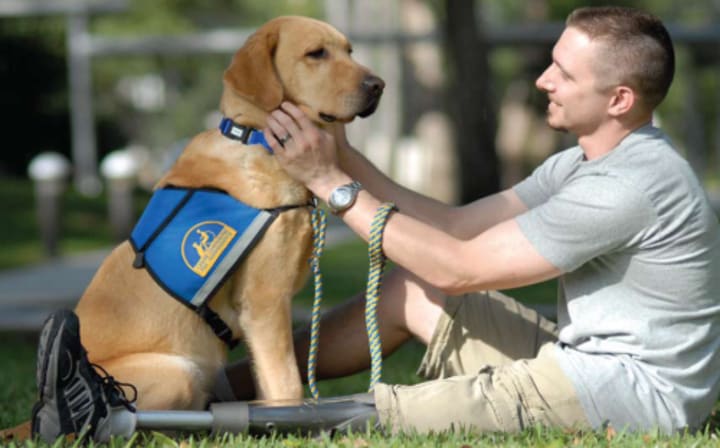
Autism Assistance:
Autism service dogs are there to assist the person with meltdowns. They can do this by providing comfort and calming interactions for the person. These dogs have tasks like deep and light pressure therapy (DTP or LPT), lie on the handler, response to the episode or also known as an alert, disruption of harmful behavior of themselves or others, steering or guiding the handler through obstacles that could trigger them, they can be there for stability such as bracing and balance support, and with that, they are trained to complete that involves finding things, like the car, home or other people and places. They can prevent meltdowns from happening or dim the reaction or episode down to a more manageable form. The most common breeds for autism assistance dogs are: Golden Retrievers, Labrador retrievers, Standard poodles, Staffordshire bull terriers, and German shepherds.
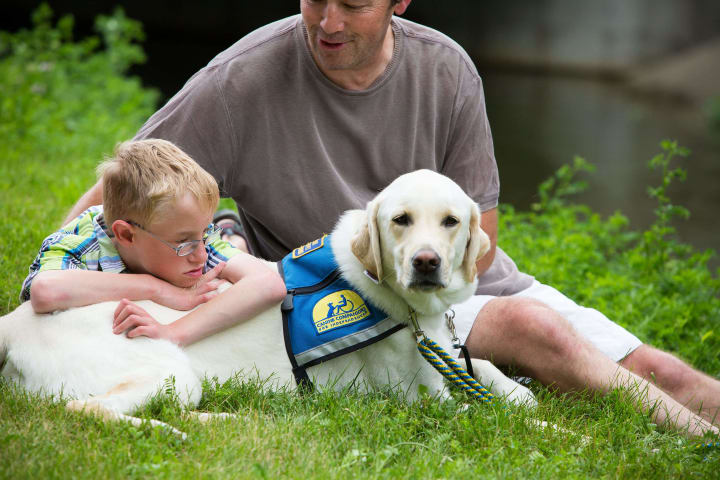
MobilityAssistance:
A mobility service or assistant dog is a dog that helps someone that is physically disabled. Some of these people include someone who is wheelchair-bound or someone who has really poor balance. Anyone who has a physical disability that affects mobility and or balance is eligible for a mobility dog in order to help them throughout their day. Even people with POTS and Ehlers-Danlos syndrome use mobility dogs. With POTS the dog can alert to episodes the involve lightheadedness, fatigue, fainting and more. Then they provide support so that the handler can be guided to a safe area. Mobility dogs complete tasks such as picking up objects, pulling or guiding, opening doors, pushing elevator and door buttons, providing support or stability by bracing, retrieval of items, turning on and off lights, and more. Mobility dogs have to be at least 55 pounds and the dog should be at a minimum height of 23 inches tall. The most common mobility dog breeds are: Standard Poodle, Golden Retriever, Labrador Retriever, German Shepard, and American Staffordshire Terrier.
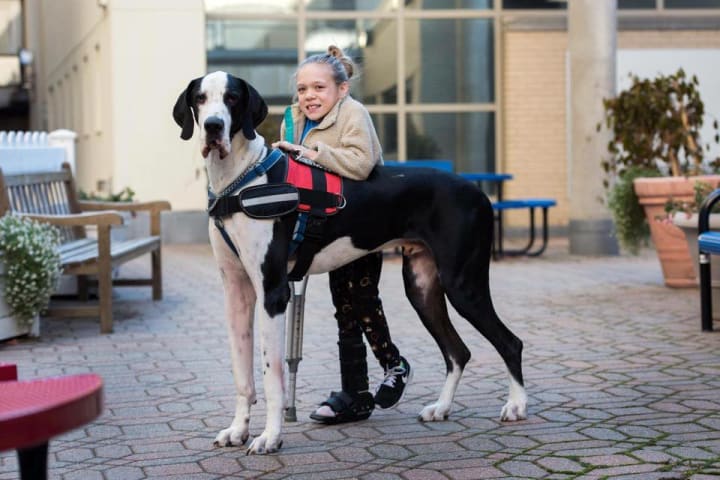
Allergy Alert:
Allergy alert or service dogs can help a handler that has a severe allergy. These dogs can detect when there is an allergen in the environment that could be harmful to the handler. These are people that have peanut allergies, milk allergies, medication allergies and more. These dogs make sure that the handler does not consume something that will be harmful to the handler. This could be in foods or even just in the air or environment. This limits the possibility of having allergic reactions that could result in hospitalization. The most common allergy alert dogs are: Labradoodles, Poodles, Bloodhound, Beagle, German Shepard, and Golden Retriever.

Diabetic Alert:
Diabetic alert dogs are dogs that alert their handlers when they have either low or high blood sugar. These dogs prevent their handlers from going into diabetic ketoacidosis. They alert their handlers when they are too low or even too high by smelling their handler’s breath. They are trained to even wake up their handler if they are sleeping. This allows the handler to take action on getting their blood sugar back to normal before it becomes dangerous. If the handler is a child the dog can be trained to go get an adult in order to let them know that they need help. The most common diabetic alert dogs are: Standard Poodle, Labrador Retriever, and Golden Retriever.
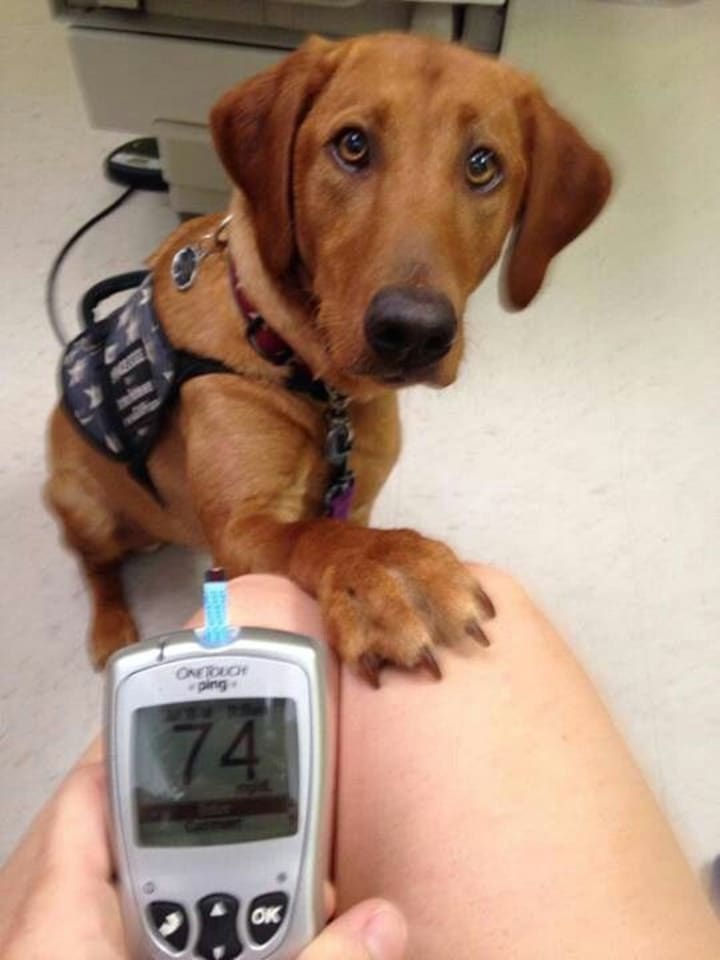
Hearing Dogs:
Hearing dogs are dogs that alert their handler of certain sounds. These sounds can be things like doorbells, fire alarms, phone calls, alarms and more. These dogs can be used by people that have hard of hearing or that are deaf. That way the handler can live alone and still manage through life. The dog helps the handler know when there is something that needs to be known or get their attention to something important. It allows the handler to be more independent and able to be more social and go out into social environments and know what is going on. These dogs alert by making physical contact with the handler, such as nudging or pawing in order to get the handler’s attention. The most common breeds for hearing dogs are: Golden Retriever, Laborder Retriever, Poodle, and American Cocker Spaniel.

Guide Dogs:
Guide service dogs are dogs that guide the blind or visually impaired. These dogs allow for people to navigate through busy restaurants, streets, around obstacles and more. Though dogs are not able to distinguish color which makes it hard for them to navigate busy intersections with traffic lights. These dogs are still able to guide their handles through busy streets and help their handlers get to the destination that is needed. They complete tasks such as guiding or steering, help with obstacles like stairs and curbs, retrieval of dropped items or finding items and more. These dogs are a lot like mobility dogs except used for guiding which means they have to be a certain height in some cases and sometimes even weight. The most common breeds for guide dogs are: Boxer, Poodles, Golden Retriever, Labrador Retriever, and German Shepard.

Seizure Response:
A seizure response service dog is a dog that is able to alert the handler that they are going to have a seizure. This is normally someone who has epilepsy. These dogs are trained to do multiple different tasks, some of these tasks involve barking or nudging to alert caregiver or adult of a seizure, moving into a position to protect the person having a seizure, or activating an alarm that gets other people’s attention in order to get the person some help. These dogs make it possible for the handler to have fewer seizures because the handler is able to take medication before the seizure occurs making it either a smaller seizure or prevent it from happening. When the dog gets the handler’s attention a lot of the time it gives them time to get to safety sitting or laying on the ground before the seizure happens. These dogs allow for the handler to go through their lives without worry or even less worry than they had before they had a service dog. Small dog breeds don’t work for this type of work because they are not able to complete the physical side of it. The most common breeds for seizure response service dogs are: Golden Retriever, Labrador Retriever, Poodle, Goldendoodle, German Shepherd, and Newfoundland.
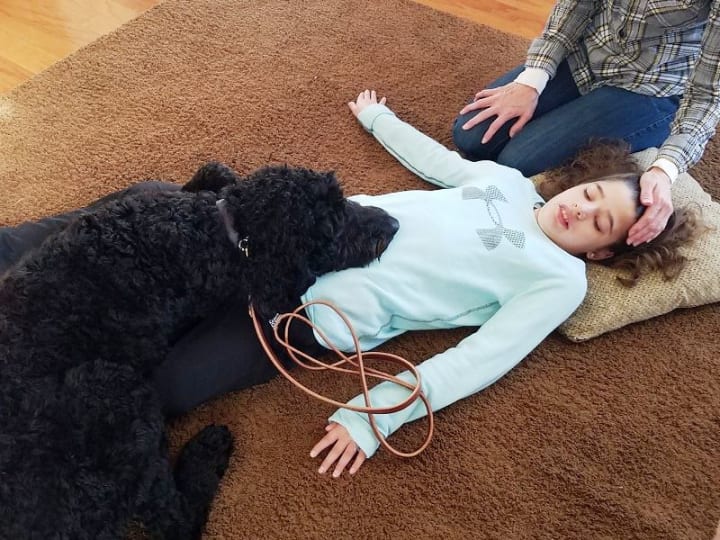
Migraine Alert:
A migraine alert service dog is a lot like a seizure response service dog. They alert their handler of an oncoming migraine before the migraine or symptoms start to take effect. The dog notices changes in their handler’s physical and psychological behaviors in order to know that a migraine is coming. This allows for the handler to get out of the environment that they are in and into a safe one. That way the handler can take care of themselves safely or get the help that they need. These dogs are for handlers that have chronic migraines that cause the handler to have difficulty completing simple tasks. These dogs can alert by nudging or pawing, stare or stick very closely to you, lick you, Circle around you and even bark to get your attention. They can help provide stability for their handler if they have problems walking on their own during a migraine and even guide their handler to safety if needed. The most common breeds for migraine alert service dogs are: Dalmatians, German Shepards, Golden Retriever, Bernese Mountain Dogs, Poodle, and Rough Collie.
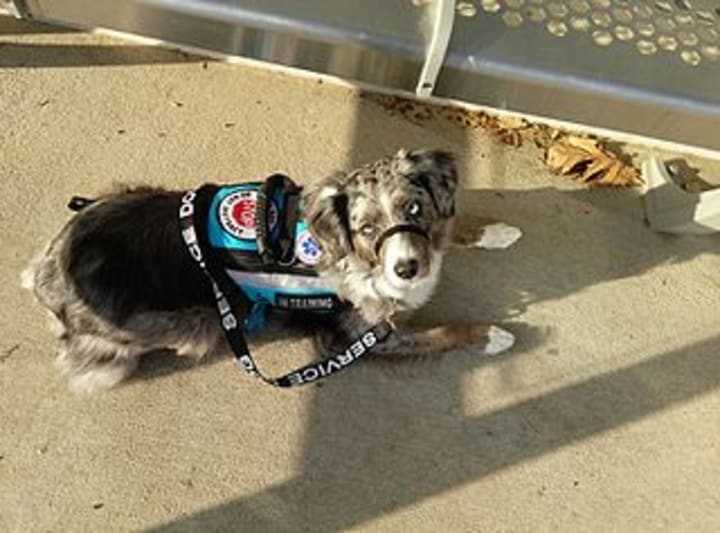
The breeds that I listed are not the only breeds that can be service dogs. Almost any dog can be a service dog if they can do the work that is asked of them without harming the dog. If you are disabled and need help completing regular everyday tasks a service dog can help you. A service dog is not for everyone though. If you are not disabled DO NOT try to get a service dog. It isn’t something that should be a popular choice or something that is seen as cool. A service dog is seen as a piece of medical equipment to help someone with a disability get through their day to day lives. That is why service dogs are so important. It can hurt actual service dog teams or people that need service dogs if someone is pretending to have a service dog or bring their ESAs into public places. Service dogs give people with disabilities the option of having their lives back and as normal as it can be. They are able to do the simple tasks that they couldn’t do before they had a service dog. If you see a service dog team out in public please ignore them and let them have their space. You are more than welcome to ask questions to the handler if you would like to learn more and become more educated about service dogs. Please do not distract the dog by talking to it or petting it when the dog is working because the dog could potentially miss an alert. If you ask the handler if you can pet the dog and they say yes then you can but don’t pet without asking first. Business owners, managers, police, airlines and more can only ask two questions. The first one “is that a service dog?” and the second one is “what tasks does the dog perform?” Legally that is all they can ask you. If you want to share more you can but you do not have to. If you are asking the handler questions do not be upset if the handler does not want to answer. They are just trying to get to places and complete their to-do-list just like everyone else. Please be respectful to service dog teams and let them be as normal as they can. These are what service dogs are and what they are trained to do for their handlers.
About the Creator
Natalie C..
I am a young writer who lets her creative flow through her writing. I tend to write on the darker side of topics because a lot of people don't. I have a darker imagination than most people.
Enjoyed the story? Support the Creator.
Subscribe for free to receive all their stories in your feed. You could also pledge your support or give them a one-off tip, letting them know you appreciate their work.






Comments
There are no comments for this story
Be the first to respond and start the conversation.